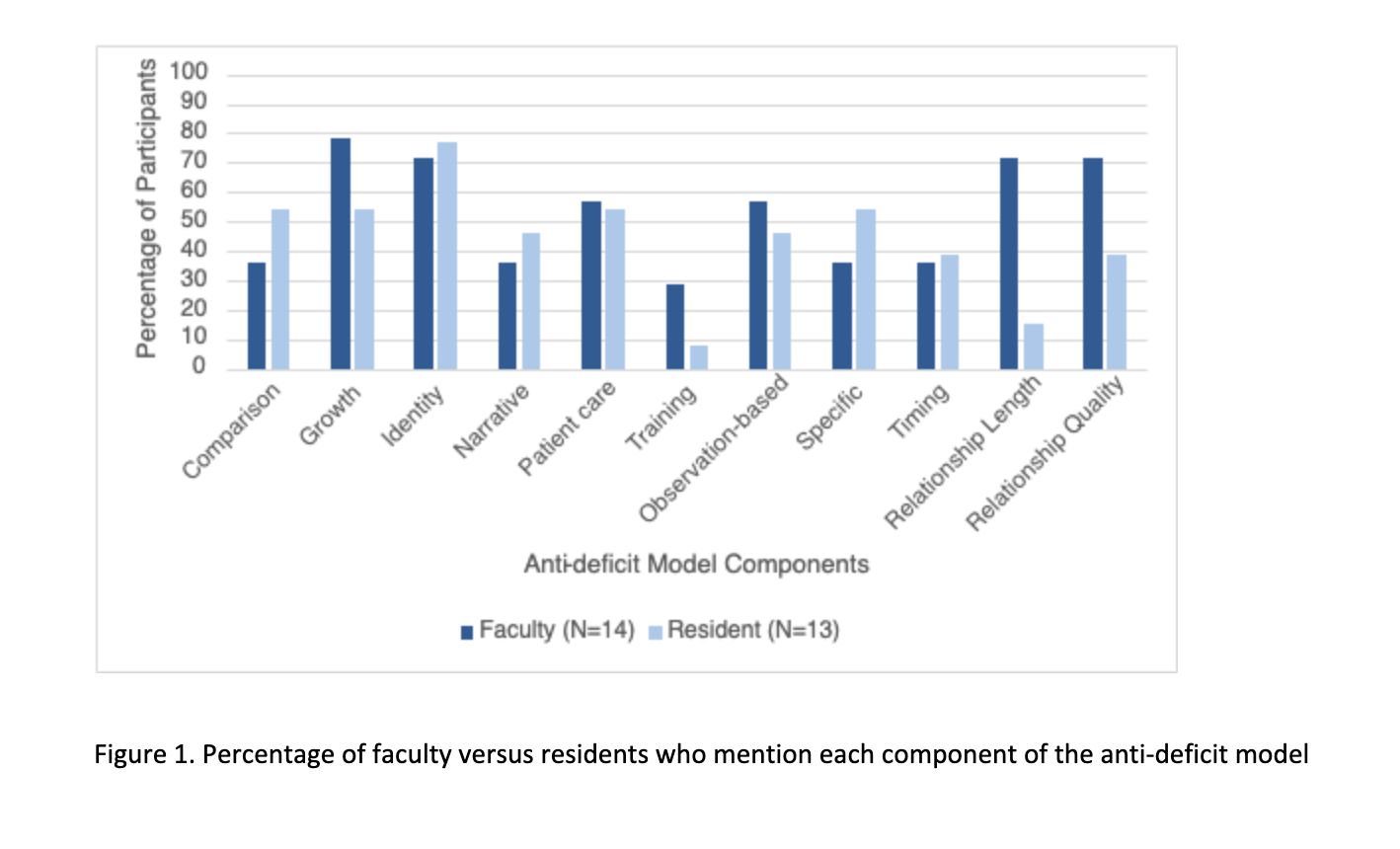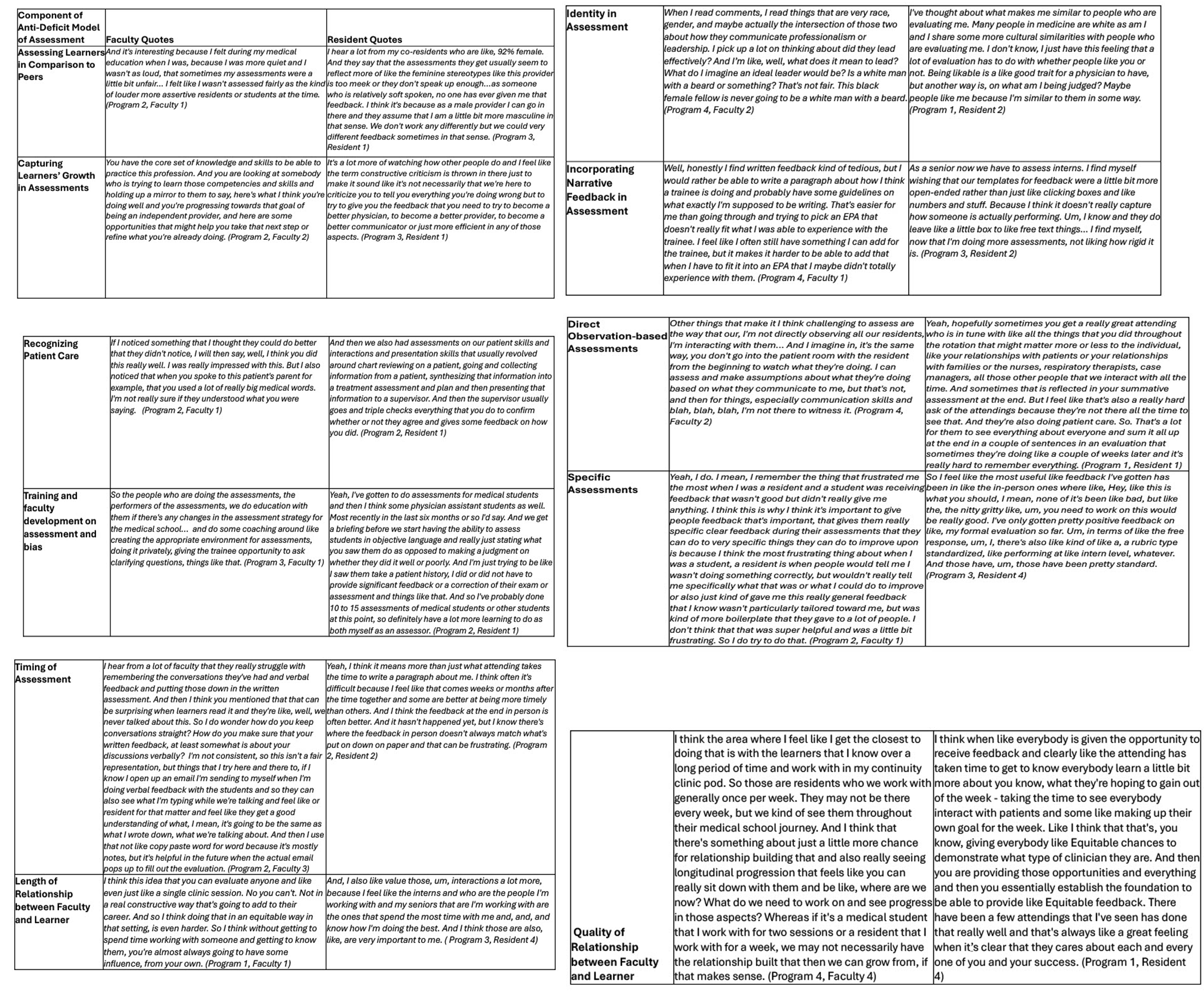Medical Education 7: DEI
Session: Medical Education 7: DEI
464 - Perceptions of Equitable Assessment among Pediatric Residents and Faculty: a multi-center qualitative secondary analysis using the anti-deficit model of equitable assessment
Saturday, April 26, 2025
2:30pm - 4:45pm HST
Publication Number: 464.6479
Hannah Kakara Anderson, University of Pennsylvania Perelman School of Medicine and The Children's Hospital of Philadelphia, Philadelphia, PA, United States; Jennifer K. Sun, Children's Hospital of Philadelphia, Philadelphia, PA, United States; Pricilla Valeria S. Cabral, Children's Hospital of Philadelphia, Philadelhpia, PA, United States; Anna Weiss, Children's Hospital of Philadelphia/Perelman School of Medicine at the University of Pennsylvania, Philadelphia, PA, United States; Rachel Poeppelman, University of Minnesota, Minneapolis, MN, United States; Emily Borman-Shoap, University of Minnesota Masonic Children's Hospital, Minneapolis, MN, United States; Daniel C. West, Childrens Hospital of Philadelphia, Philadelphia, PA, United States; Duncan Henry, University of California, San Francisco, School of Medicine, San Francisco, CA, United States; Johannah M. Scheurer, University of Minnesota, Minneapolis, MN, United States; Patricia Hobday, University of Minnesota Medical School, Minneapolis, MN, United States; Erin Fuchs, University of Utah School of Medicine, Salt Lake City, UT, United States; Laura Lockwood, University of Colorado School of Medicine, Denver, CO, United States; Dorene F.. Balmer, University of Pennsylvania, Philadelphia, PA, United States; Meghan O'Connor, University of Utah School of Medicine, Salt Lake City, UT, United States; Reena Tam, University of Utah School of Medicine, Salt Lake City, UT, United States; Kathleen Timme, University of Utah School of Medicine, Salt Lake City, UT, United States

Dorene F. Balmer, PhD (she/her/hers)
Co-director of Research on Education at CHOP
University of Pennsylvania
Philadelphia, Pennsylvania, United States
Presenting Author(s)
Background: There is substantial evidence that assessment systems in graduate medical education (GME) have inequitable processes and outcomes. Emergent anti-deficit, justice-oriented models argue that assessment systems must both limit harmful, biased, and poor-quality assessments and enable equity by recognizing learners’ growth and limiting peer comparison. To date, these models have largely examined learner perceptions of equitable assessment, leaving a gap in understanding how perspectives might differ between learners and faculty assessors within the same assessment system. Filling this gap is essential because sharing a mental model of equitable assessment among all frontline users is necessary for successfully developing and implementing more equitable assessments in GME.
Objective: Determine and compare how residents and faculty across 5 pediatric residency programs perceive equitable assessment.
Design/Methods: We analyzed data from semi-structured interviews with residents (n=13) and faculty (n=14). Components of the Anti-deficit Model for Equitable Assessment informed interview guides and deductive codes. Participants were asked about their 1) understanding of the word “assessment,” 2) experiences of being assessed and/or assessing others, and 3) thoughts regarding the notion of equity. In dyads, we applied codes to segments of interview data relevant to the research question. We compared code frequency between residents versus faculty to evaluate the relative salience of the components.
Results: Both residents and faculty commented on the role of identity in assessment, noting specifically that stereotypes and bias can lead to inequitable assessment. Similarly, both groups mentioned the importance of timely and observation-based assessments. Residents spoke more frequently about comparison to their peers as source of inequity, while faculty thought capturing residents’ growth was important for advancing equity (Figure 1). More faculty discussed the importance of training (faculty development) and having quality longitudinal relationships with learners (Representative quotes provided in Table 1).
Conclusion(s): Although faculty and residents align on some perceptions of equitable assessment, they differ in salience and the degree to which each component of assessment contributes to each group’s perceptions of equitable assessment. Understanding these differences can help programs align expectations, secure buy-in, and support residents and faculty to meet the shared goal of creating more equitable assessment systems.
Figure 1. Percentage of faculty versus residents who mention each component of the anti-deficit model

Table 1. Representative quotations of each component of the anti-deficit model by faculty versus residents


